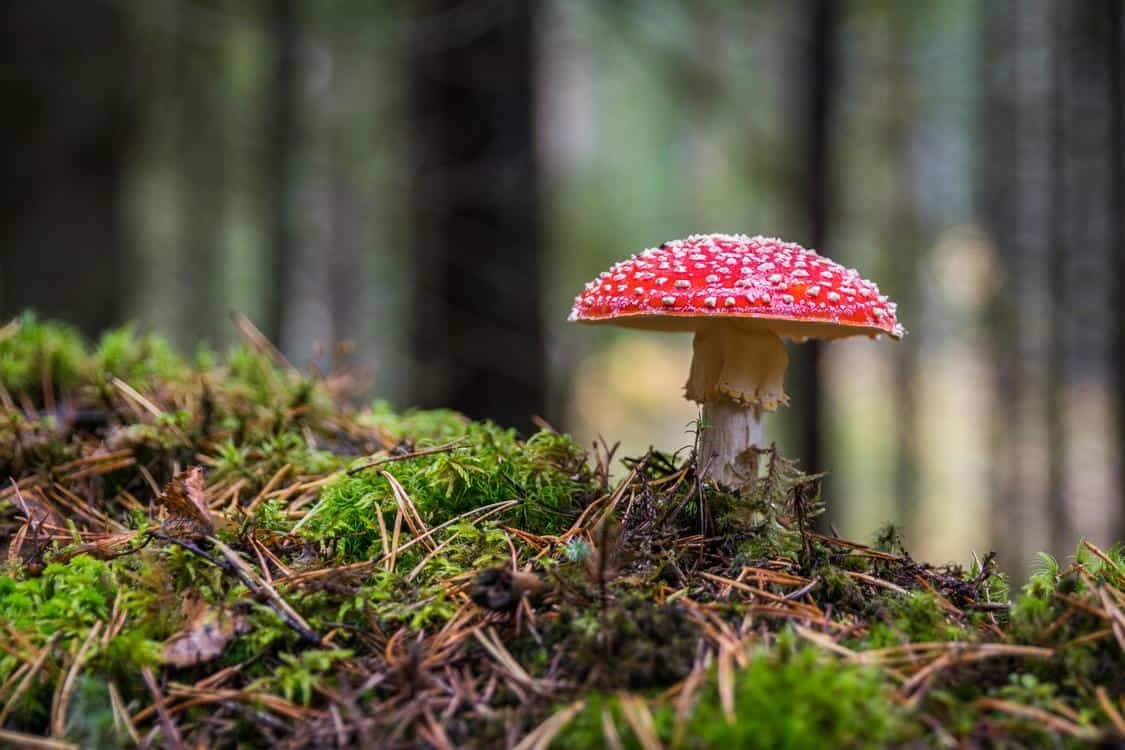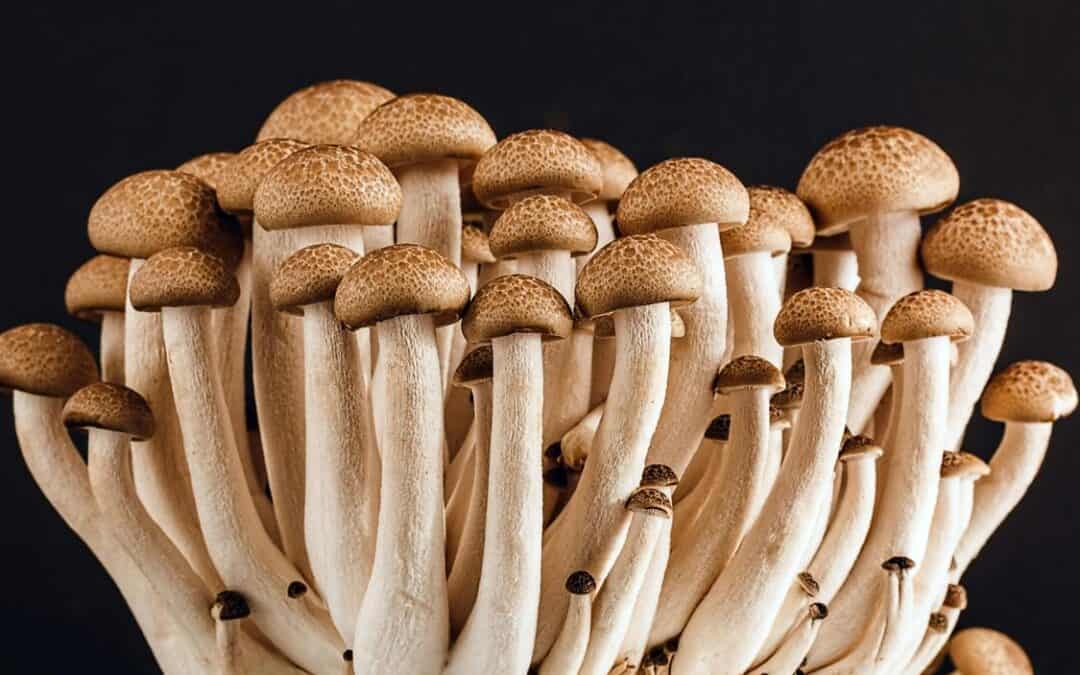Drying mushrooms is a simple process that allows you to preserve your harvest. When done correctly, they are full of mushroom flavor and can add a delicious twist to any dish.
When drying mushrooms, it is important to clean them thoroughly. This will help to ensure that any extra fungi are not dried onto the mushrooms, which could cause illness when consumed.
1. Clean Them
If you want your mushrooms to dry perfectly, they need to be clean before starting the process. This is true regardless of whether or not you are stringing them or placing them on a cardboard sheet for air drying. Mushrooms are notorious for hiding dirt in every little nook and cranny, so it is important to thoroughly examine them for any debris that may be lodged inside. If you find any, gently brush them off with a damp paper towel or cloth. However, it is not recommended to wash them under running water as this will cause them to absorb too much water and become soggy. According to the New Food Lover’s Companion, “Washing mushrooms increases their water content, which causes them to become soggy and spoils their flavor.”
To avoid washing your mushrooms, place them on a piece of cardboard or a dry towel. Spread them out evenly, so none of the mushrooms are overlapping. Then, move the cardboard/towel to a well-ventilated area out of direct sunlight and in front of a fan. This will help the mushrooms dry quickly.
While you are waiting for the mushrooms to begin drying, you can also prepare a container to store them in by lining it with a dry paper towel or cloth. This will prevent the mushrooms from sticking together, which can happen if they come into contact with each other while they are drying and you aren’t trying to keep your workspace sterile.
Once the mushrooms are beginning to dry, check on them daily. When they are ready, they will look wrinkly to the eye and rubbery to the touch. They will also be less spongy and more brittle in places. If they are still spongy in spots, continue to dry them for another day or two.
Mushrooms that are not completely dried can be rehydrated for use in recipes. To rehydrate them, simply pour hot water over the mushrooms and let them sit for about an hour. Then, strain out the soaking liquid and use the mushrooms in your favorite recipe. Rehydrating the mushrooms can also help them regain their original size if they have become too small for your intended project.
2. Place Them on a Cardboard
If you don’t have a food dehydrator or the time to use it, you can still dry your mushrooms using a method similar to what people have done for centuries. Just place your mushroom pieces on a piece of cardboard or a dry towel and ensure that they are not touching or overlapping each other. Then move them to a well-ventilated area of your home (anywhere that is out of direct sunlight) and let them air dry for 7-10 days or until they are no longer moist when squeezed.
Cardboard is a cheap and abundant material that almost everybody has access to, and it’s much more environmentally-friendly than styrofoam or other mushroom substrate materials that may be more common in commercial mushroom cultivation operations. You should be able to get a large quantity of cardboard from your local grocery store, free of charge – just ask the staff if they can give you some boxes.
Make sure that the cardboard has holes in it for airflow – this is crucial to this method and will make the drying process much faster. You can do this by either using a screwdriver or some scissors to cut the cardboard in a series of holes that are about half-inch wide, across the surface of the cardboard. Try to position the first row of holes fairly close together, with a second row of holes about two-thirds of the way down from the top of the cardboard. Make sure that the holes don’t overlap with each other – this will prevent water from pooling in them, which would damage the mushrooms.
When the mushrooms are completely dry, they can be stacked in an airtight container or bag and stored away for up to two years. If the mushrooms are stored in an open-air container, however, it is important that they are kept in a dark and cool location as they can be exposed to sunlight and other contaminants that could damage or spoil them.
The final step is to use a sterilized needle to string the mushrooms on a length of sturdy thread or cooking string like you would a popcorn garland or bead necklace. This will allow the mushrooms to be placed in a well-ventilated spot where they will remain protected from bugs, birds and other competing fungi until they are ready to be eaten.
3. Place Them in Front of a Fan

A fan will help speed up the drying process. This is because it creates a flow of air that draws moisture from the mushrooms, making them dry faster. However, you should be careful when using this technique because it can cause the mushrooms to change in flavor and texture. Depending on your climate and the size of the mushrooms, it can take 7-10 days for them to be fully dried.
Mushrooms that are not completely dried can mold and spoil. This is why it’s important to check on them daily, especially after they are done drying. If they are still damp or sticky, they will need to continue drying until they are brittle and snap easily when bent.
The best place to do this is in a well ventilated area that will allow the mushrooms to get a lot of sunlight and heat. It’s also a good idea to put a dark towel or piece of cardboard under the mushrooms to attract even more heat, making them dry faster.
If you don’t have a fan, or the area where you are drying your mushrooms is very humid, you can partially dehydrate the mushrooms in the oven before placing them outside to finish drying. This will decrease the drying time by up to 50%.
Whether you are drying your mushrooms in an oven or in a dehydrator, you should blot them with paper towels before putting them inside to remove any excess water. This will help ensure they dry evenly and prevent them from steaming while in the oven or dehydrator.
When your mushrooms are finished drying, they will have a leathery texture and snap easily when bent. If you want them to be a little more flexible, you can put them back in the oven or dehydrator for 30 minutes and test again.
If you’re looking for a quick and easy way to dry your homegrown mushrooms, this is definitely the method for you. It’s a good alternative to other methods that can be expensive and require special equipment. This drying method is also less messy than other methods, and your mushrooms will have a better flavor.
4. Check Them Daily
Mushrooms can dry very quickly in a dehydrator, which gives you greater control over the temperature and airflow. It is also easy to keep them clean and avoid contamination. However, it is not necessary to purchase a dehydrator to dry mushrooms. You can use your oven, which is just as effective. Regardless of the drying method you choose, you should always check your mushrooms every half hour. If you notice any spots of moisture, take them out and blot them with a paper towel before returning them to the oven. This will ensure that your mushrooms dry evenly and completely.
If you are using your oven, be sure to place the mushroom trays on a rack so they don’t touch each other. You should also place them in a well-ventilated area, away from direct sunlight.
Another option is to pre-dry your mushrooms by placing them on a piece of cardboard or a dry towel. Make sure they are spread out evenly so that they don’t overlap each other. Then, move the cardboard/towel to a room with good airflow (such as a closet or walk-in pantry). Pre-drying will only take hours, and it is important to check on them often so that they do not retain too much moisture.
You can also dry your mushrooms by hanging them on a string. Make sure that the string is sterilized before use, and hang them in a well-ventilated room without any animals, bugs, or humidity problems. Mushrooms that are not dried properly can be mushy or even rotten. They can also lose their potency.
A more professional way to dry your mushrooms is to place them on silica gel. You can buy silica gel at many home improvement stores. The silica gel will absorb excess moisture and help your mushrooms dry more quickly. The only downside to this method is that you need to place a lid on the container, which will make it difficult to check your mushrooms on a regular basis. This method can also be time-consuming, since you will need to wait for the mushrooms to be completely dry before removing them from the silica gel.

